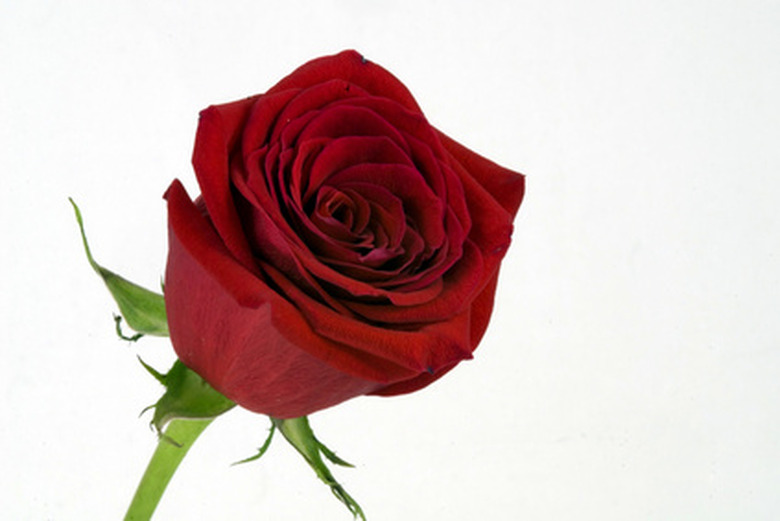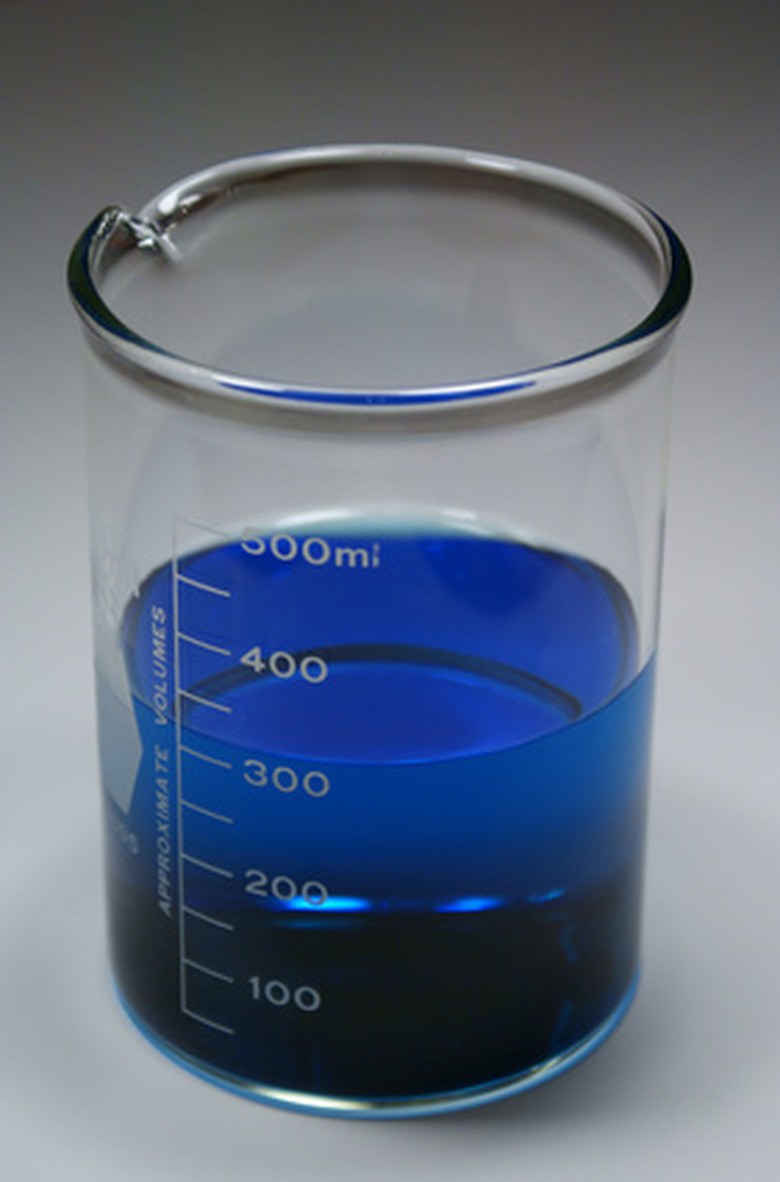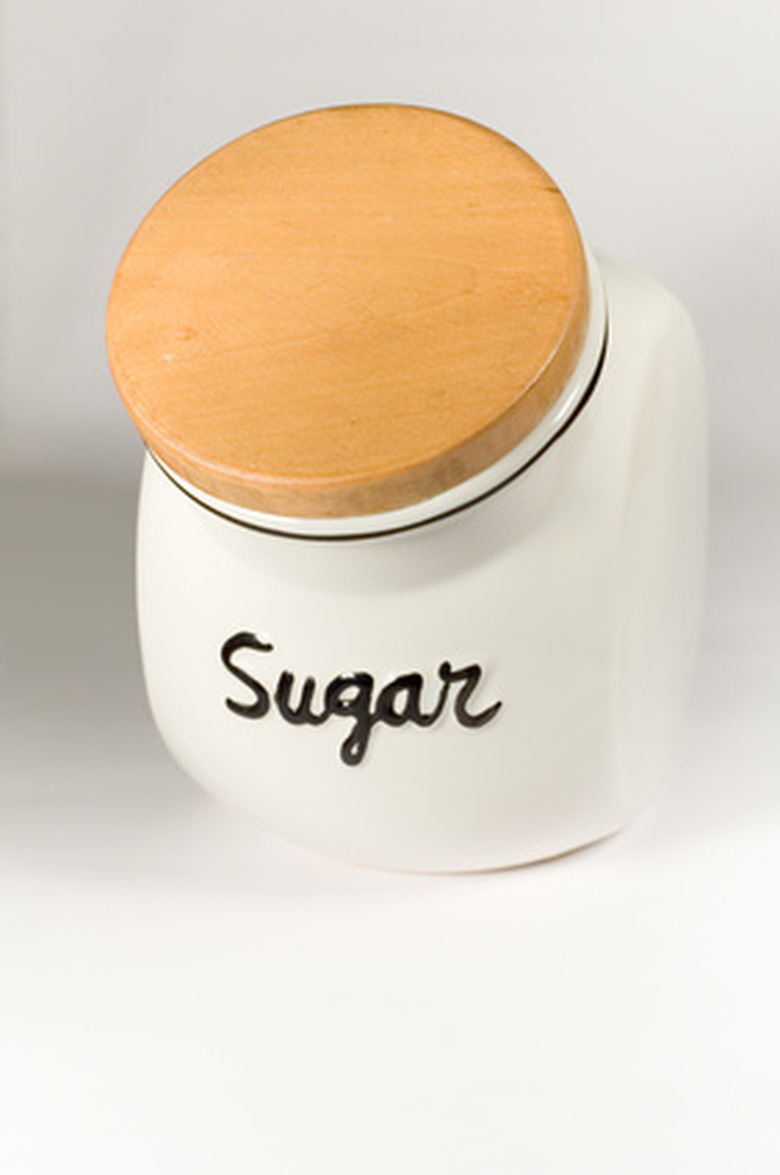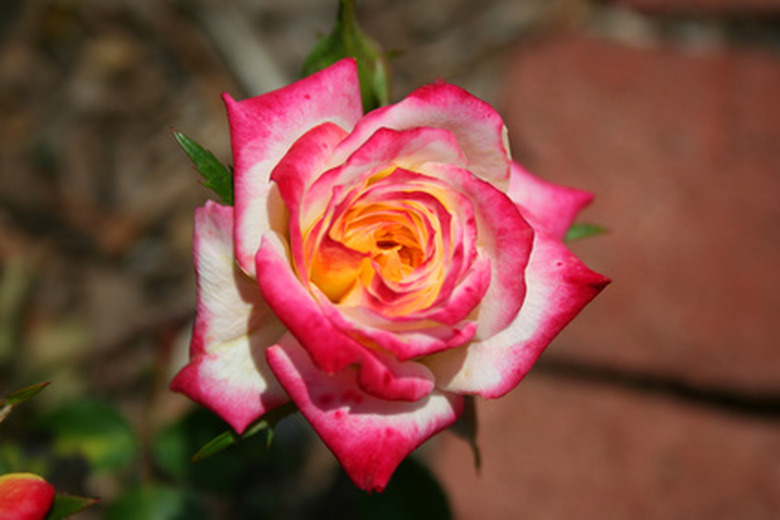How To Use Food Coloring To Dye Roses
Dying a rose is a great way to teach children about how the capillaries in the stem carry water to the flower. Dying a rose is not only educational for children, but watching the rose change colors is fun and exciting as well.
Things Needed
- Long-stemmed rose
- Tall vase
- Food coloring
- Kitchen shears
- Sugar
- Spoon
- Water
Dying a rose is a great way to teach children about how the capillaries in the stem carry water to the flower. Dying a rose is not only educational for children, but watching the rose change colors is fun and exciting as well. In order to successfully carry out the experiment, it is important to select a rose that has already bloomed, but is not fully matured. This will allow the rose time to soak up the food coloring without wilting.
Step 1
Fill a tall vase halfway up with water. Snip the end of a rose diagonally while holding it under running water. Insert the rose into the tall vase of water. Snipping the end of the stem while holding it under water keeps the capillaries open and receptive to the food coloring.
- Dying a rose is a great way to teach children about how the capillaries in the stem carry water to the flower.
- Snipping the end of the stem while holding it under water keeps the capillaries open and receptive to the food coloring.
Step 2
Drop 2 tsp. of food coloring into the vase, and use a long spoon to mix the water thoroughly. The coloring should be very dark. Add more food coloring as needed if the water appears too light.
Step 3
Add in 2 tbsp. of sugar into the vase, and mix it in with a long spoon. The sugar will help carry the food coloring up into the capillaries more quickly so that the rose will start to show color faster than it normally would.
- of food coloring into the vase, and use a long spoon to mix the water thoroughly.
Step 4
Leave the rose sitting in the colored water for at least three days in order to soak the food coloring into the petals of the rose. The longer the rose sits in the water, the more colorful the petals will be. It can be fun to try out different color combinations. For example, yellow roses dyed with blue food coloring will produce green coloration on the petals. Red roses dyed with blue food coloring will produce purple coloration on the petals.




